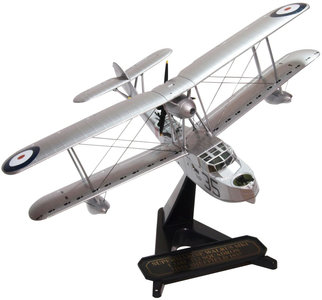The Supermarine Walrus was a British single engine amphibious bi-plane reconnaissance aircraft which first took to the skies in June 1933. Operated by the Royal Navy Fleet Air Arm, it was the first British squadron service aircraft to incorporate a fully retractable undercarriage, completely enclosed crew accommodation and an all metal fuselage. Designed as a fleet spotter to be catapulted from battle ships, or cruisers, it was later deployed as a rescue aircraft, having a capacity for three to four persons.
The Walrus also became one of the first aircraft to be fitted with an undercarriage position indicator on the instrument panel. Test pilotAlex Henshawfound that the Walrus was strong enough to make a wheels-up landing on grass without much damage although he also said it was "the noisiest, coldest and most uncomfortable" aircraft he had ever flown.
When flying from a warship, the Walrus would be recovered by touching-down alongside, then lifted from the sea by a ship's crane. The Walruslifting-gearwas kept in a compartment in the section of wing directly above the engine. A crew member would climb onto the top wing and attach this to the crane hook. Landing and recovery was a straightforward procedure in calm waters but could be very difficult if the conditions were rough.
Here we see the Walrus Mk 1 as deployed aboard HMS Sheffield in 1937 with 712 Naval Air Squadron which itself was active between 1936 -1940, incorporating the period of our model, and again between 1944-1945. With an all-over silver colour scheme, the cockpit is moulded in green and the aircraft comes without bomb racks. Note the machine guns placed fore and aft of the fuselage. Additional decoration includes the RAF roundel on the upper and lower wing tips and the No. 35 painted in black on the fuselage below the clear cockpit window.
Scale:
1:72
Dimensions: see
this page
Material: mainly metal
Stand: included
Brand: Oxford Aviation

Nr: 72SW005
In stock:
4
Added to website: 2024-06-03










